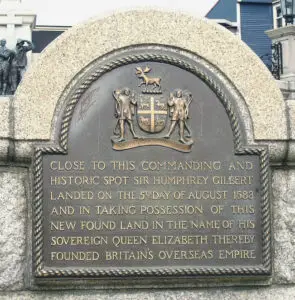 On this day in Tudor history, 29th August 1583, in the reign of Queen Elizabeth I, courtier, adventurer and mariner Maurice Browne died.
On this day in Tudor history, 29th August 1583, in the reign of Queen Elizabeth I, courtier, adventurer and mariner Maurice Browne died.
Browne captained The Swallow and then The Delight on a venture to colonise North America in 1583. Although the expedition saw voyage leader Sir Humphrey Gilbert claiming Newfoundland for the queen, the venture failed. Browne and Gilbert both drowned.
Here are some more facts about Maurice Browne:
- Maurice Browne was born in in 1555/6 and was the son of merchant John Browne from London and his third wife, Christian Carkett.
- Maurice's father died in 1570, leaving executors to organise Maurice's education.
- Maurice was educated at Pembroke College, Cambridge.
- By 1576, Maurice was working for Sir Thomas Smith and by 1580, he was serving Sir Francis Walsingham.
- Maurice also acted as the London agent for John Thynne of Longleat, sending detailed reports of what was going on at court and how it would affect Thynne and his ally Henry Knyvett, along with helpful advice on potential patrons.
- In 1581, Browne went to the Azores. As his biographer Alison Wall points out, this trip was probably at the instigation of Sir Francis Walsingham, who was sending Browne as "an agent for England's support of Don Antonio's claim to the Portuguese crown."
- In June 1583, Browne departed on an expedition with Sir Humphrey Gilbert, who had convinced Browne that there were riches to be had in the colony he'd found in North America. Browne's patron, Sir Francis Walsingham, encouraged Browne to go so that he could report back on the colony to the queen. Gilbert's fleet consisted of five ships: the Delight, the Bark Ralegh, the Golden Hind, the Swallow, and the Squirrel. Browne captained the Swallow.
- On 5th August 1583, Gilbert landed at St John's Harbour, Newfoundland, and claimed St John's for the queen, along with all the land within 200 leagues' radius of the harbour, "thus establishing the first English possession in the New World since John Cabot's expedition in 1497" (R. Rapple).
- On 20th August, Gilbert set off south, heading along the coast towards Sable Island. He was accompanied by the Squirrel, the Golden Hind, and the Delight, which was captained by Browne. Unfortunately, on the morning of 29th August 1583, on the way to Sable Island, the Delight ran aground. Her crew had not kept watch properly overnight and the wind caught them out. Only 16 crew members managed to escape in a small boat. Browne refused to take a place in the boat and stayed with his ship, going down with her.
- On 9th September 1583, just 11 days after Browne's death, Sir Humphrey Gilbert drowned as the Squirrel was engulfed by a storm around the Azores as the fleet headed home due to lack of supplies.
Also on this day in Tudor history...
Image: Plaque commemorating Gilbert's founding of the British Empire in St. John's, Newfoundland. Photo by S Maloney.
Notes and Sources
- Wall, A. (2008, January 03). Browne, Maurice (1555/6–1583), adventurer and courtier. Oxford Dictionary of National Biography. Retrieved 27 Aug. 2023, from https://www.oxforddnb.com/view/10.1093/ref:odnb/9780198614128.001.0001/odnb-9780198614128-e-52008.
- Rapple, R. (2012, January 05). Gilbert, Sir Humphrey (1537–1583), explorer and soldier. Oxford Dictionary of National Biography. Retrieved 28 Aug. 2023, from https://www.oxforddnb.com/view/10.1093/ref:odnb/9780198614128.001.0001/odnb-9780198614128-e-10690.



Leave a Reply